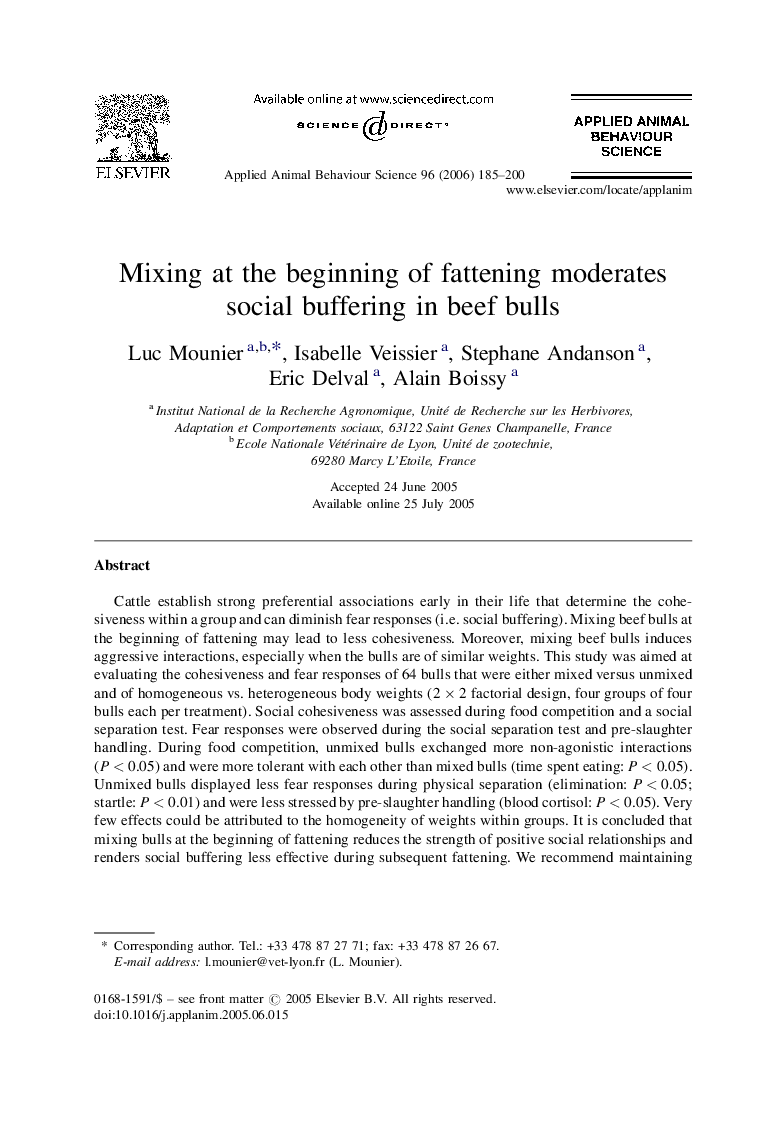| Article ID | Journal | Published Year | Pages | File Type |
|---|---|---|---|---|
| 4524272 | Applied Animal Behaviour Science | 2006 | 16 Pages |
Abstract
Cattle establish strong preferential associations early in their life that determine the cohesiveness within a group and can diminish fear responses (i.e. social buffering). Mixing beef bulls at the beginning of fattening may lead to less cohesiveness. Moreover, mixing beef bulls induces aggressive interactions, especially when the bulls are of similar weights. This study was aimed at evaluating the cohesiveness and fear responses of 64 bulls that were either mixed versus unmixed and of homogeneous vs. heterogeneous body weights (2Â ÃÂ 2 factorial design, four groups of four bulls each per treatment). Social cohesiveness was assessed during food competition and a social separation test. Fear responses were observed during the social separation test and pre-slaughter handling. During food competition, unmixed bulls exchanged more non-agonistic interactions (PÂ <Â 0.05) and were more tolerant with each other than mixed bulls (time spent eating: PÂ <Â 0.05). Unmixed bulls displayed less fear responses during physical separation (elimination: PÂ <Â 0.05; startle: PÂ <Â 0.01) and were less stressed by pre-slaughter handling (blood cortisol: PÂ <Â 0.05). Very few effects could be attributed to the homogeneity of weights within groups. It is concluded that mixing bulls at the beginning of fattening reduces the strength of positive social relationships and renders social buffering less effective during subsequent fattening. We recommend maintaining familiar bulls together throughout fattening in order to preserve cohesiveness within groups and for animals to benefit from social buffering during stressful situations.
Related Topics
Life Sciences
Agricultural and Biological Sciences
Animal Science and Zoology
Authors
Luc Mounier, Isabelle Veissier, Stephane Andanson, Eric Delval, Alain Boissy,
